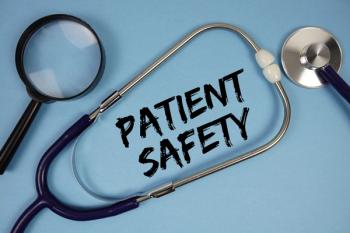
Opinion: Responding to the Rise of E-Cigarettes
E-cigarettes have reinvented tobacco consumption and reemphasized smoking's consequences.
With e-cigarettes, Big Tobacco has made a triumphant return to market after nearly a century of regulatory battles. This newer, sleeker, and more hi-tech cousin to the traditional cigarette has taken the teenage population by storm-E-cigarette usage in high schoolers has increased by 800% since 2011. Studies indicate that nicotine compromises the development of the prefrontal cortex in adolescents with immature brains. This impairs their memory, attention span, and increases their risk of subsequent illicit drug use. As healthcare providers, we have a responsibility to make our patients aware of this issue and recommend tried-and-true smoking cessation methods instead.
Thanks to the plethora of fancy flavors and candy-like packaging, 66% of young users don’t even know that e-cigarettes contain nicotine. Nicotine alone does not cause the diseases that are commonly associated with traditional tobacco use, but its addictive nature is what makes it dangerous.
Nicotine use alters the natural rewards pathway by upregulating cholinergic receptors in the brain in a manner that makes the user crave more, resulting in addiction. It is especially concerning that these new e-cigarettes are capable of delivering even more nicotine than traditional cigarettes. A typical pack of cigarettes contains approximately 2.4% nicotine by volume (NBV). Most e-cigarette companies carry this percentage as their minimum. However, many companies, including JUUL, carry products that are 5% NBV, more than double the amount in a pack of traditional cigarettes. That, in combination with their youth-friendly flavors like mango, fruit, and cucumber, leads to more nicotine consumption and greater addiction than ever before.
Contrary to popular belief, “vaping” does not expel clean water vapor. It produces an aerosol of the toxic components found in e-liquids, whose ingredients are largely unregulated. Toxic ingredients include-but are not limited to-formaldehyde, acrolein, and diacetyl. Formaldehyde and acrolein are known human carcinogens. Diacetyl is linked with bronchiolitis obliterans, also known as, “popcorn lung.” Prolonged usage of these products also exposes the user to chromium, nickel, and lead. E-cigarette users are at risk for heavy metal poisoning, which can result in cardiovascular, hepatic, and nervous system dysfunction.
Since these products are relatively new, there are no current studies addressing the long-term effects of direct or second-hand exposure to e-cigarette smoke. However, existing studies suggest that vaping is linked to exacerbation of inflammatory respiratory and cardiovascular conditions. The sputum of e-cigarette smokers has been found to contain excess amounts of immune-modulating proteins associated with asthma, COPD, bronchitis, and cystic fibrosis. Chronic exposure to nicotine is responsible for the hemodynamic changes that contribute to the development of atherosclerosis. Certain studies have also shown that exposure to e-liquids alters cellular functions, including inhibition of DNA repair mechanisms.
JUUL justifies e-cigarette use by claiming that their device is intended to help smokers quit; however, their product has been around since 2015 and they have yet to submit any documentation to the FDA to get their product approved for smoking cessation. At press time, investigations were still underway to determine whether or not e-cigarettes could be regarded as a cessation device. Some statistics demonstrate that e-cigarette users are more likely to convert to cigarette smoking, and not the other way around.
The FDA only recently acquired the jurisdiction to oversee e-tobacco products under the Tobacco Control Act. Since then, they have imposed age restrictions and warnings for nicotine and various other dangerous substances that are known ingredients in e-liquids. Most recently, they have issued a ban on flavored e-cigarette products to be implemented over the next year. E-cigarette companies have responded with much resistance to this proposal, and there is a high chance that this issue will end up in litigation.
Meanwhile, we must continue to educate and advocate for our patients and their families who are not aware about the dangers of e-cigarettes. Gear up, the battle with Big Tobacco is not over.
Denise Yeung is a PharmD/MPH student (class of 2020) at the Touro University College of Pharmacy in California.
Newsletter
Pharmacy practice is always changing. Stay ahead of the curve with the Drug Topics newsletter and get the latest drug information, industry trends, and patient care tips.













































































































































